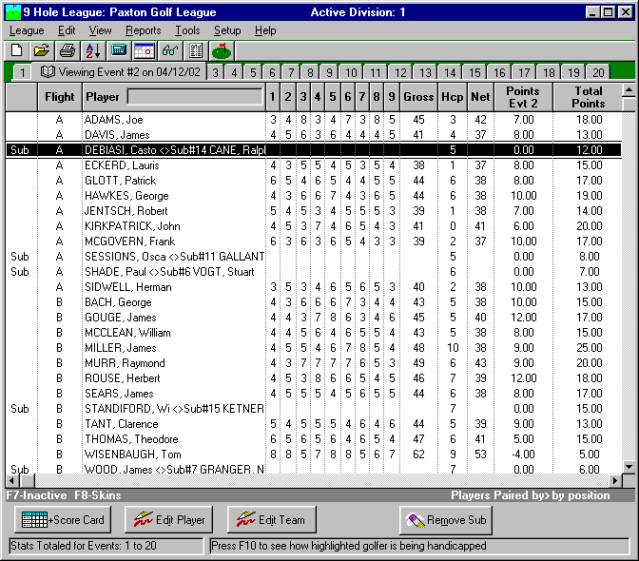Golf League Software For Mac
Golf Handicap Software
Chart My Golf, the Free graphical golf stats software to help improve your game. Many golf statistics. Chart golf strokes, putts, fairways hit, greens in regulation, sand saves and many more. Calculate golf handicaps; USGA ™, CONGU ®, SAGA, EGA, GA Australia. MScorecard 3.2 is a product functioning as a golf scorecard and statistics software on the market like paper scorecards. It instantly calculates scores, course handicaps, stableford points, sidegames and advanced round statistics for up to five. Golf Video Analysis Software. Go to product Go to shop. Introducing the golf video analysis software perfect for golf video analysis. Swing Catalyst offers a complete set of golf training and video analysis tools that is being used by instructors, coaches and golfers from around the world. Manage golf league, generate Web site, print cards, and track data. If you are looking for a software package to help you manage your golf league, then look no further than LeagueChief. If you are looking for a software package to help you manage your golf league, then look no further than LeagueChief.

Golf League Software
Mulligan’s Eagle™ The only pro-quality golf stats, recordkeeping, handicapping and scoring application for the Mac OS. From Mulligan Software, the premier developers of software for golfers on the Mac.
Golf League Manager Software
Keeping score for Mac users since 1995. Now, Mulligan’s Eagle™ provides stats and recordkeeping support far beyond the old standard, and in addition to stats and analysis for golf enthusiasts, brings professional event scoring capabilities to every player, golf pro, tournament chairman, play-day coordinator, golf coach, and charity golf director on the planet. The latest version of Eagle requires OS X version 10.10 and a 64-bit capable Intel-based Mac. When purchased from the Mac App Store, Eagle requires OS X 10.10 (Yosemite) or later, including OS X El Capitan (10.11), macOS Sierra (10.12) and High Sierra (10.13). If your Mac is PowerPC-based, 32-bit only, or running Mac OS X 10.4 (Tiger), 10.5 (Leopard), 10.6 (Snow Leopard), 10.7 (Lion), 10.8 (Mountain Lion) or 10.9 (Mavericks), you can and an earlier version of Eagle that's compatible, then update it for free when you upgrade your Mac or Mac OS X. Sandbox and Gatekeeper Mulligan's Eagle, versions 2.3 or later, are compatible with Apple's 'sandbox' requirements for applications purchased from the Mac App Store. If purchased elsewhere, Eagle conforms to the requirements of the Gatekeeper feature of OS X to assure users that their copy of the software is certified to come from Mulligan Software.
Use Disk Utility to Format an External Drive. After you connect an external drive to your Mac, open the Applications folder from the Finder window. The Disk Utility application is located in the Utilities sub-folder. Launch Disk Utility and then click to select the external hard drive listed on the left. Click the icon for your external hard drive in the sidebar on the left. Click the Erase tab along the top of the window. From the Volume Format menu, choose Mac OS Extended (Journaled). Enter a name for the external hard drive in the Name field. Click the Erase button. External hard drive not recognized. An external hard drive is a data storage device that connects to a computer with a cable, typically USB or FireWire. Most external hard drives are cross-platform, giving them the ability to work on a number of different operating systems. Macintosh computers are able to recognize hard drives formatted for both Macintosh and Windows computers.